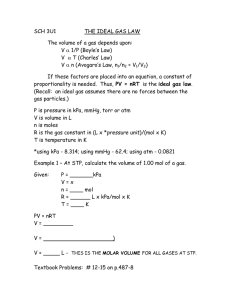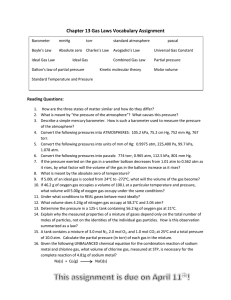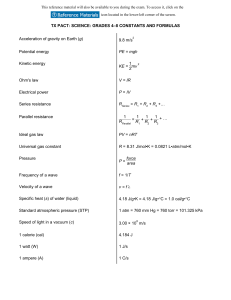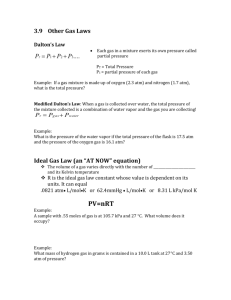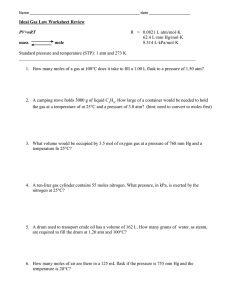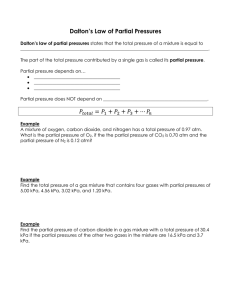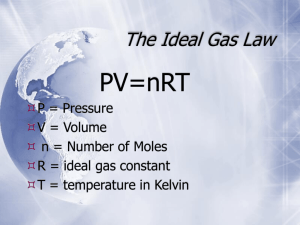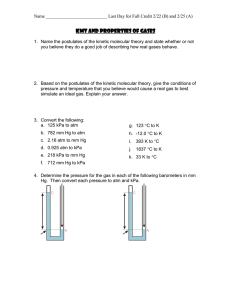Gas Laws
advertisement
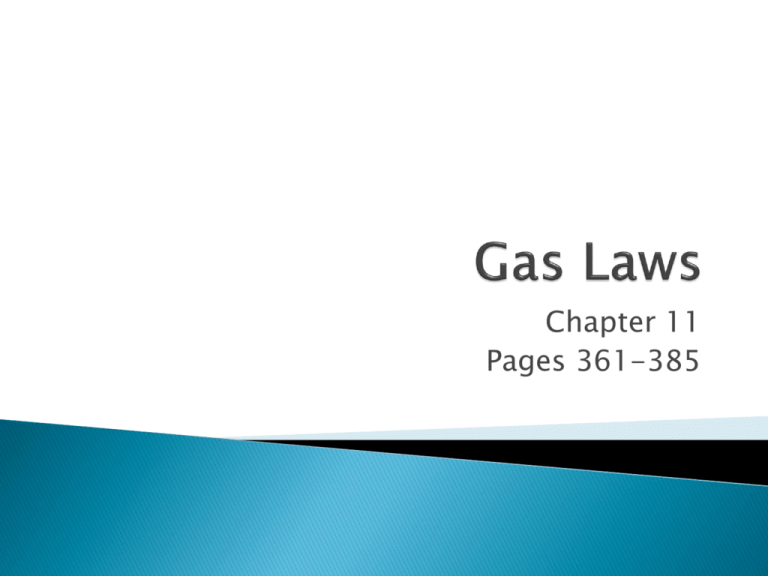
Chapter 11 Pages 361-385 Pressure (P) = Force/Area ◦ Units for P 1 atm = 101.325 kPa = 760 mmHg = 760 torr = 14.7 psi ◦ Units for F Newton ◦ Units for A m2 Dalton’s Law of Partial Pressures ◦ Add partial pressures of all gases in mixture to find total pressure Demonstration (calculating your pressure) practice conversions p.365 11.1 section review (#2-4, 6) P.369-370 ◦ K-M theory: explain the relationship between pressure and volume As volume decreases, molecules collide more often with the walls of their container, which increases pressure. Pressure and volume are inversely related. ◦ Definition ◦ Equation (PV = PV) Practice p.370 P.371-372 ◦ K-M theory: explain the relationship between volume and temperature ◦ ◦ ◦ ◦ As temperature increases, the number of collisions of particles increase. If pressure is constant, volume increases. Volume and temperature are directly related. Temperatures must be in Kelvin (oC + 273.15) Absolute zero Definition Equation (V1 / T1 = V2 / T2) Practice p.372 P.373-374 ◦ K-M theory: explain the relationship between pressure and temperature When temperature increases, the number of collisions of particles increases, and pressure increases if volume is constant. Pressure and temperature are directly related. ◦ Definition ◦ Equation (P1 / T1 = P2 / T2 ) Practice p.374 P.374-375 ◦ Definition ◦ Equation (PV / T = PV / T) Practice p.375 Due today: 11.2 section review (all) Define Equation Ideal gas constant: R = .0821 L·atm / mol·K or 8.31 L·kPa/mol·K Ideal gas law units: ◦ ◦ ◦ ◦ V in liters P in atm or kPa (changes value of R) n in mol T in K Practice p.385 1 mole of gas = volume of ______ L ◦ Practice p.381 Remembering stoichiometry ◦ Write out the chemical equation ◦ Balance the equation ◦ Use molar ratios to convert from given to desired answer ◦ Practice p.382 Practice p.385 Section review (#2, 3, 5-7)
